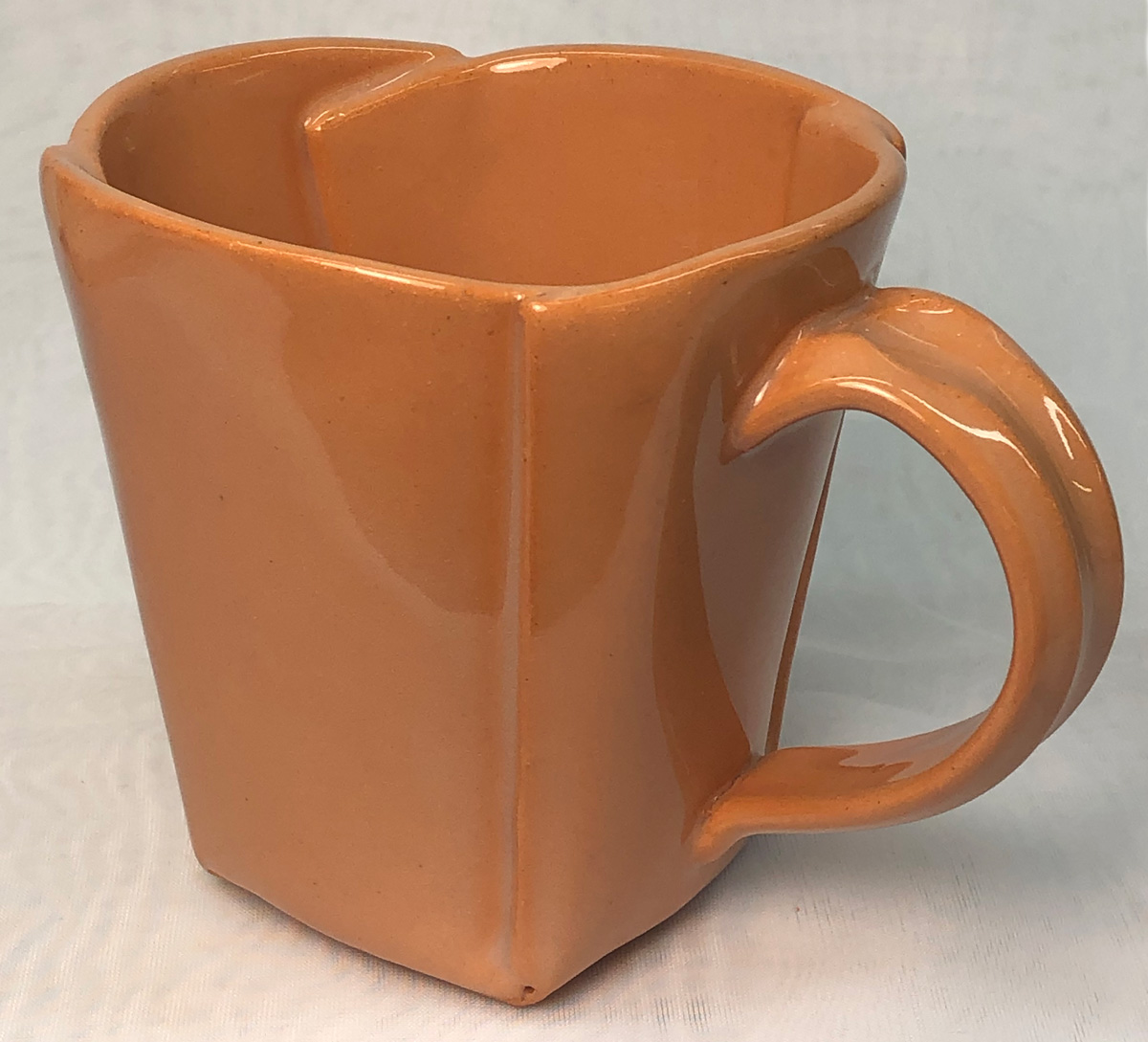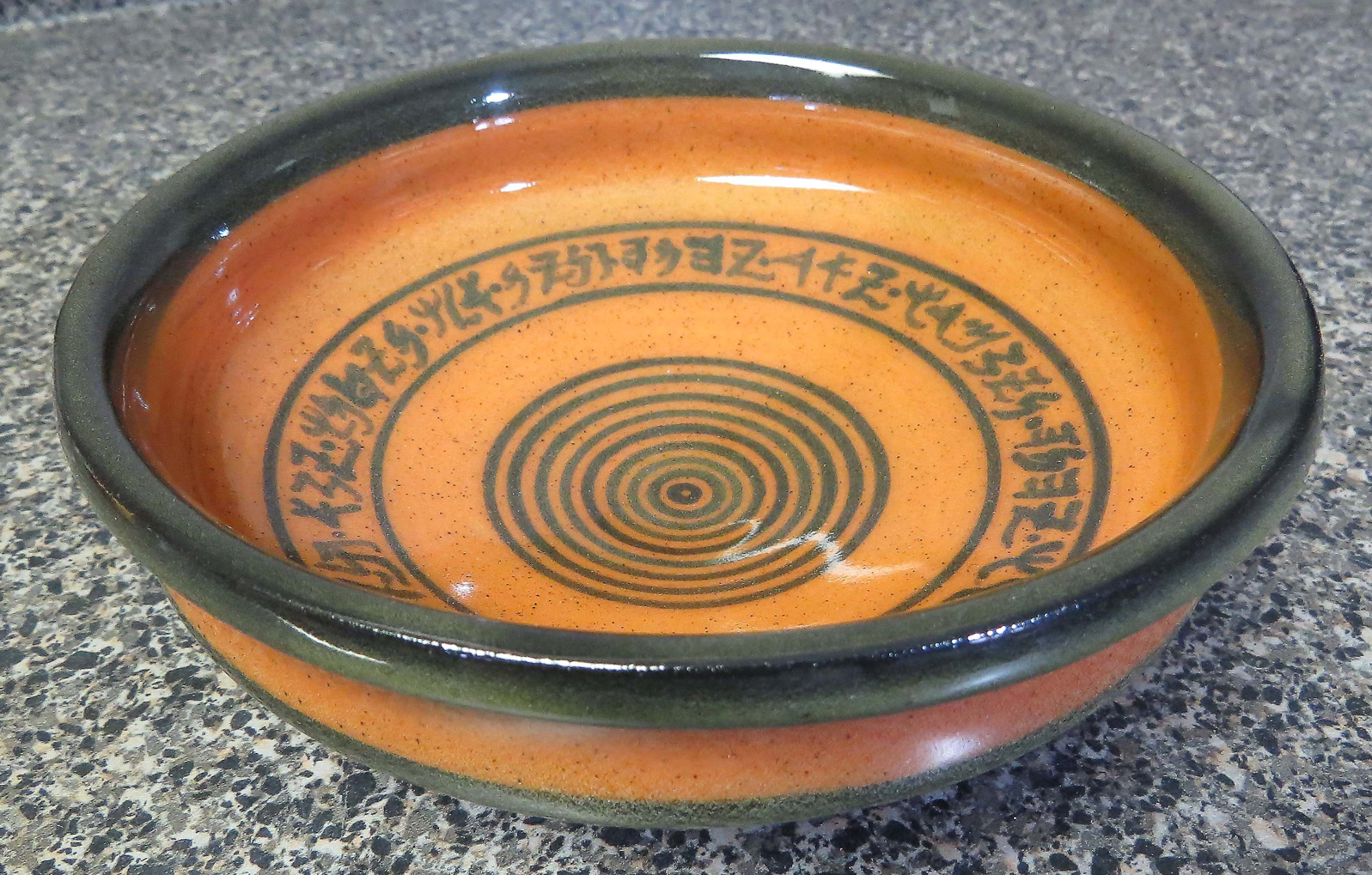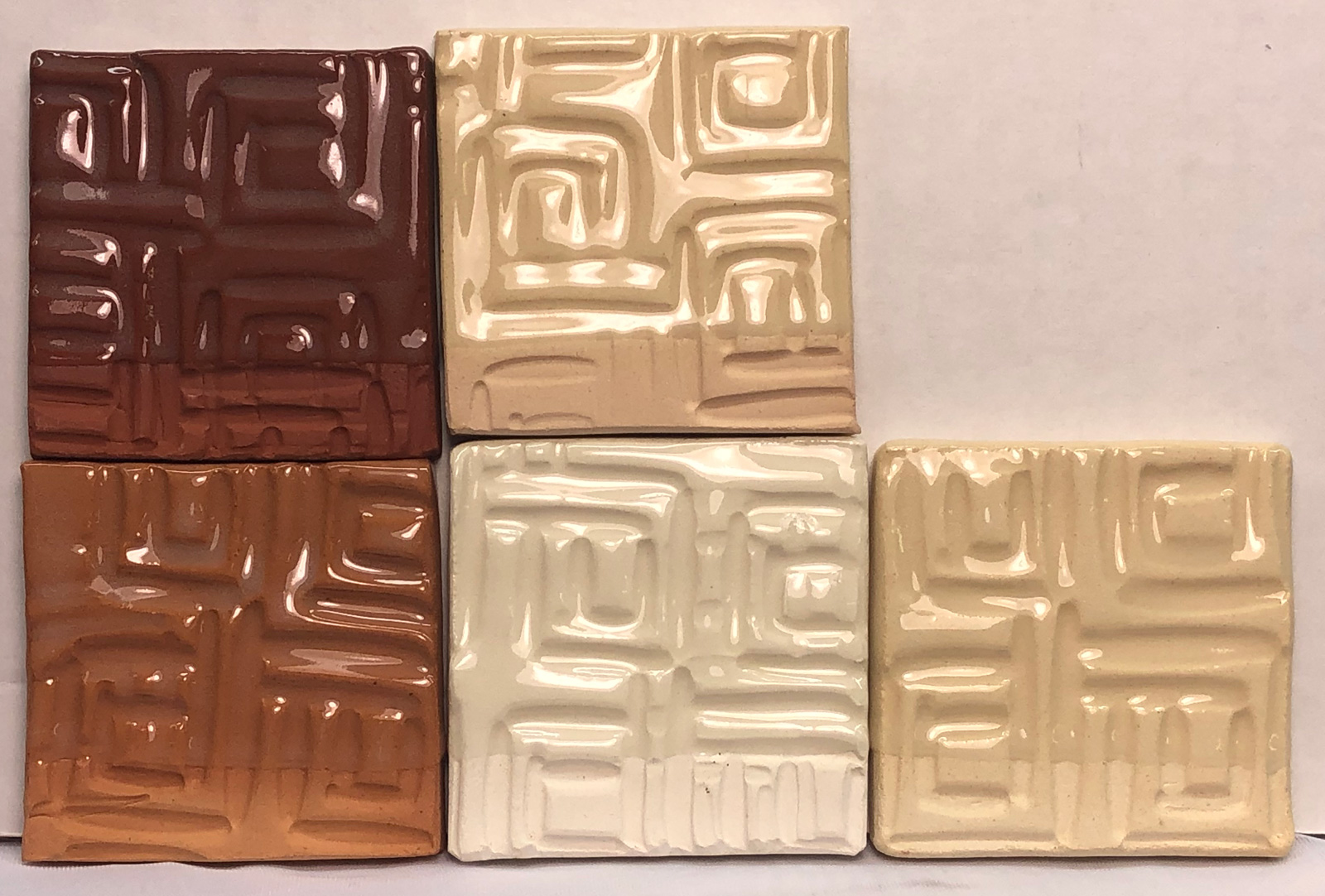Home
Glazes, Engobes
G1916Q Transparent Base Glaze
Description
This recipe combines three frits to enable low melting to a crystal clear and considerable thermal expansion adjustability. Digitalfire.com has lots of documentation on the G1916Q recipe.
Firing
To get the best defect-free surface please consider using the drop-and-hold slow-cool 04DSDH firing schedule.

G1916Q dipping glaze + 2% iron oxide on L215. These were fired at cone 03, 05 using the 04DSDH schedule. The cone 03 version has tiny dimples on the surface, almost too small to see (likely decomposition in the body is generating bubbles).
Glazing
If the specific gravity is around 1.43 and it is gelled enough it applies very evenly with little dripping. Ware needs to be absorbent. If your ware is thin it might be necessary to glaze the inside and outside in separate operations (with drying time in between).
Recipe
This is not available as a premixed product. But you can mix (and adjust) it yourself. For our lab information on the recipes, how to mix and use them click here. You can color this using stains or make it white by adding Zircopax.
Thermal Expansion
Low fire glazes are much more difficult to match to the body, crazing and shivering are thus much more common than at higher temperatures. It intended that you adjust the 1916Q recipe to fit your clay body.



